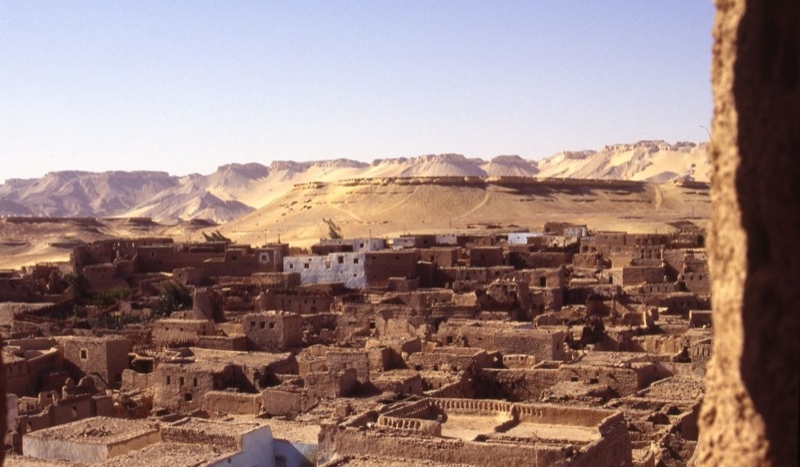
A 2009 image of a mudbrick settlement at Kharga Oasis, in a remote part of Egypt's western desert. Charlie Phillips/Flickr
An Egyptian government archeological mission has discovered an early Coptic Christian city, the country’s government announced July 24.
Egypt’s State Information Service reported that the Supreme Council of Antiquities (SCA) found the remains at Ain al-Kharab, an archaeological site that is in Kharga Oasis in the country’s Western Desert.
Seham Ismail, director general of antiquities in Kharga, led the mission, according to the article.
He said the team uncovered the remains of two churches: a basilica-style church with a central hall and two aisles, separated by rows of square columns and a smaller, rectangular church. At the smaller church, which has ruins of seven exterior columns, Coptic inscriptions on interior walls remain visible.
Research from earlier excavations suggests that the site was used throughout multiple eras, according to Ismail.
“Roman-era buildings were later adapted for use during the early Coptic period and again in the Islamic era — a testament to the region’s long-standing role as a centre of life and continuity,” the article stated.
Mohamed Ismail Khaled, secretary-general of the SCA, said in the article that the discovery — which also includes a mural of Christ performing a healing miracle, ostraca (pottery pieces used as writing or drawing surfaces), pottery fragments, glass and stone artifacts, burial remains, ovens, mudbrick homes with plastered walls, and storage spaces possessing large pottery jars that had been used for preserving food and grain — provides “a valuable window into early Christian life in Egypt.”
“Kharga Oasis played a key role as a religious and social hub throughout many historical periods, and this discovery further confirms its significance,” he stated.
Noemi Capoccia described the significance in an Aug. 1 report in Italian for Finestre sull’Arte, an online magazine about both ancient and contemporary art.
According to Capoccia, the discovery sheds light on the remains of what was the principal residential city of the Kharga Oasis at the beginning of the Coptic era and demonstrates the transition from paganism to Christianity, a key period of religious and cultural history in Egypt. She wrote that the mural of Jesus, according to the SCA, helps describe the spirituality and iconography of the first Christian communities in the area and the importance of the area for religious and social life throughout several eras.
